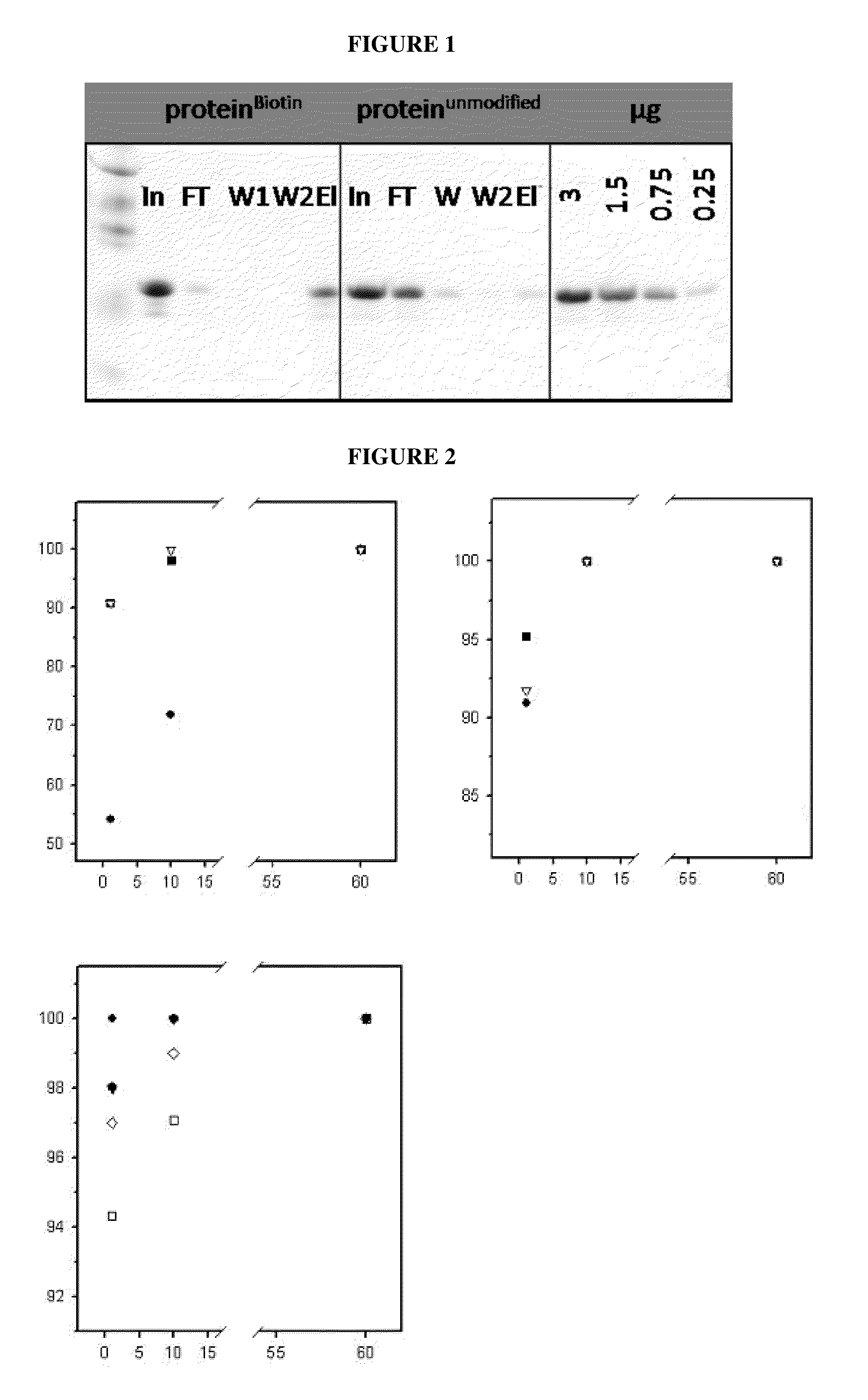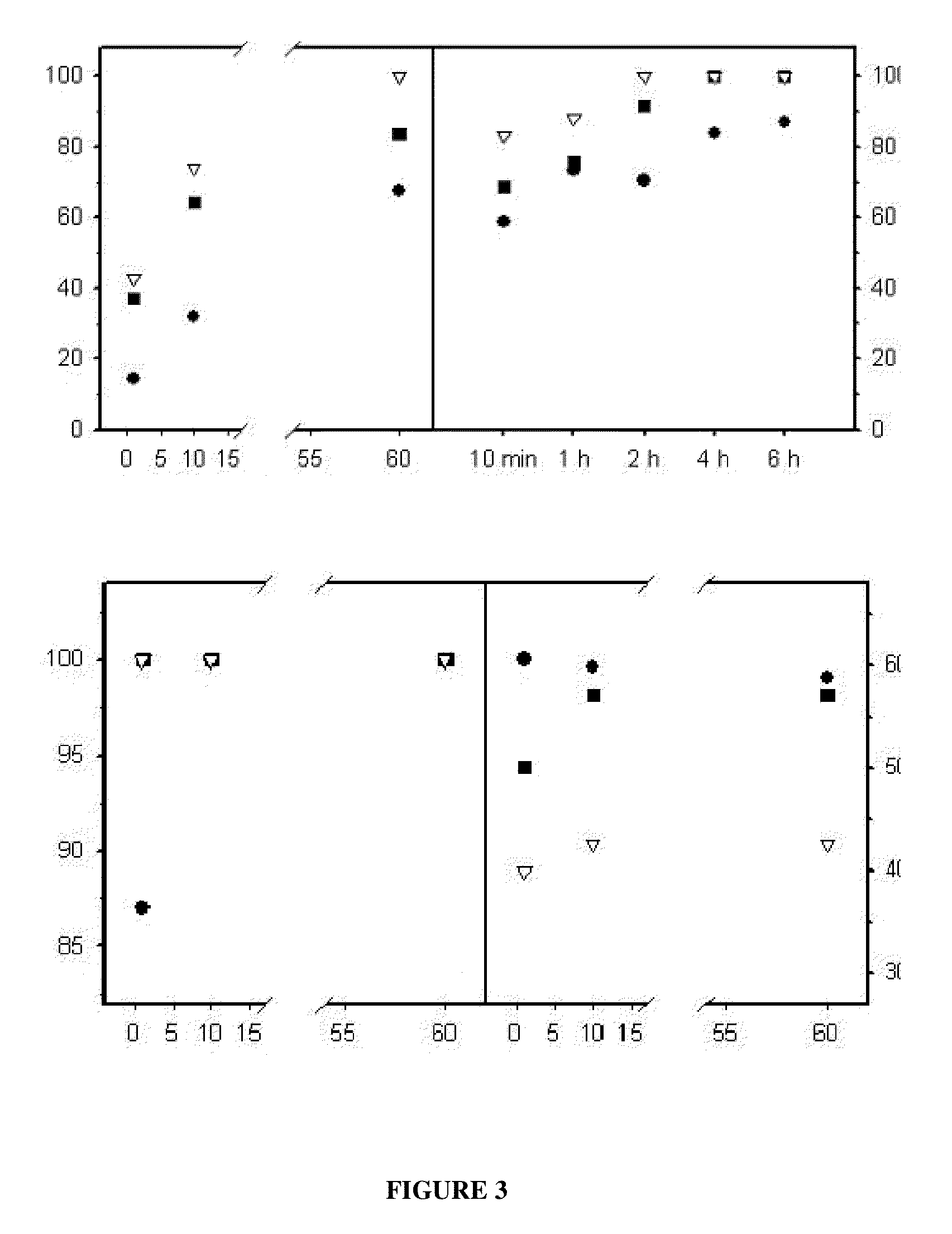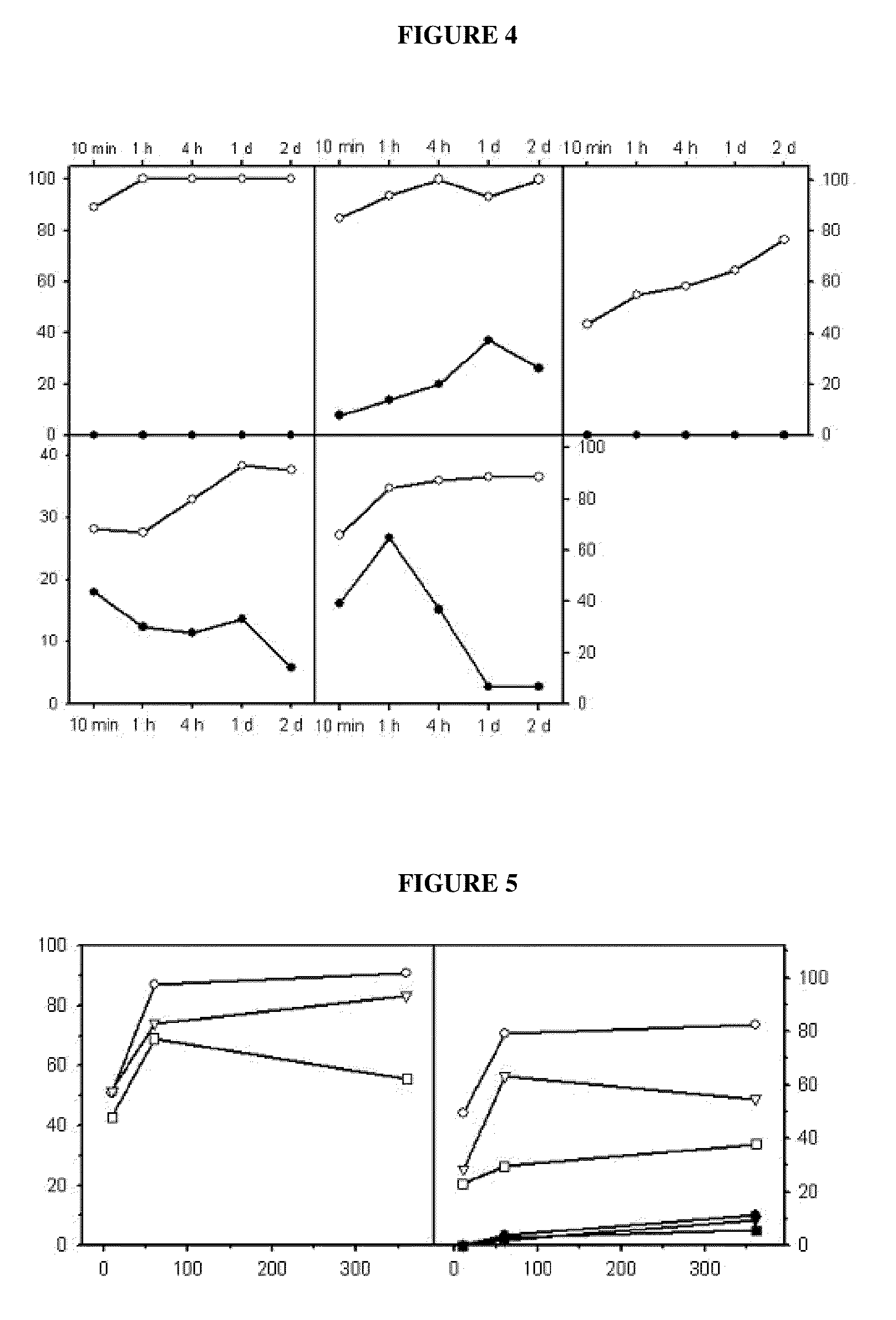Reversible covalent linkage of functional molecules
a functional molecule and covalent linkage technology, applied in the field of reversible covalent linkage of functional molecules, can solve the problems of difficult addition of more than one further functional group to the thiol-containing compound with a single maleimide linker, severe limitations on its practical utility, and inability to regenerate the native thiol-containing reagen
- Summary
- Abstract
- Description
- Claims
- Application Information
AI Technical Summary
Benefits of technology
Problems solved by technology
Method used
Image
Examples
reference example 1
Preparation of Bromomaleimide (Compound 1)
[0511]
[0512]To maleimide (2.00 g, 0.02 mol) in chloroform (15 mL) was added bromine (1.16 mL, 0.02 mol) in chloroform (15 mL) dropwise. The reaction mixture was refluxed for 2 hours and left to cool to room temperature over 1 hour. Solid yellow precipitate was filtered off and washed with cold chloroform (2×50 mL) to afford white crystals of crude 2,3-dibromosuccinimide (4.09 g, 0.016 mol). The crude succinimide was dissolved in tetrahydrofuran (50 mL) and triethylamine (2.4 mL, 0.017 mol) in tetrahydrofuran (10 mL) was added over 5 minutes at 0° C. The reaction mixture was allowed to warm to room temperature and stirred for 48 hours. The solid was filtered off and washed with tetrahydrofuran (50 mL) to afford a pale yellow powder (2.14 g, 0.012 mol) in 59% yield.
[0513]1H NMR (500 MHz, CDCl3): δ=7.67 (br s, 1H, NH), 6.89 (s, 1H, C═CH); 13C NMR (125 MHz, CDCl3): δ=173.8 (C═O), 170.5 (C═O), 136.9 (—(Br)C═C—), 135.4 (—C═CH—); IR (solid, cm−1): ...
reference example 2
Preparation of N-methylbromomaleimide (Compound 2)
[0514]
[0515]To N-methyl maleimide (0.5 g, 4.5 mmol) in methanol (22.5 mL) was added bromine (0.52 mL, 10 mmol) dropwise. The reaction mixture was stirred at room temperature for 24 hours. Solvent was removed in vacuo and the reaction mass was dissolved in tetrahydrofuran (20 mL) and triethylamine (0.8 mL, 5.85 mmol) added, then stirred for 24 hours at room temperature. The material was purified by flash chromatography on silica gel (petroleum ether: ethyl acetate, 7:3) to afford a pale white powder (0.761 g, 4.0 mmol) in 89% yield.
[0516]1H NMR (500 MHz, CDCl3): δ=6.90 (s, 1H, C═CH), 3.09 (s, 3H, N—CH3); 13C NMR (125 MHz, CDCl3): δ=168.6 (C═O), 165.4 (C═O), 131.9 (—C═CH—), 131.4 ((Br)C═C—), 24.7 (—N—CH3); IR (solid, cm−1): 3106 (s), 1708 (s); MS (CI) m / z, (%): 192 (81M+, 99), 190(79M+, 100); Mass calculated for C5H5O2N79Br: 189.95037. Found: 189.95052; m.p: 77-79° C.
reference example 3
Preparation of N-Boc-Cys(Mal)-OMe (Compound 4)
[0517]
[0518]To a stirring solution of N-Boc-Cys-OMe (Compound 3) (36 mg, 0.153 mmol) and sodium acetate (13 mg, 0.153 mmol) in methanol (3 mL) was added bromomaleimide (30 mg, 0.169 mmol) in methanol (3 mL). After 1 minute solvent was removed in vacuo. The material was purified by flash chromatography on silica gel (petroleum ether: ethyl acetate, gradient elution from 9:1 to 7:3) to afford a pale yellow powder (51 mg, 0.153 mmol) in 100% yield.
[0519]1H NMR (500 MHz, CDCl3): δ=7.63 (s, 1H, NH), 6.27 (s, 1H, C═CH), 5.40 (d, 1H, J=6.8, NH), 4.67 (ddd, 1H, J=6.8, 5.4 and 5.1, —HN—CH—C(O)—), 3.80 (s, 3H, O—CH3), 3.48 (dd, 1H, J=13.8 and 5.1, —S—CHH—), 3.62 (dd, 1H, J=14.1 and 5.4, —S—CHH—) 1.45 (s, 9H, 3×CH3); 13C NMR (125 MHz, CDCl3): δ=170.2 (C═O), 168.9 (C═O), 167.6 (C═O), 155.2 (C═O), 155.9 (—C═CH—), 119.7 (—C═CH—), 81.1 ((CH3)CO—), 53.3 (O—CH3), 52.7 (CH), 34.0 (CH2), 28.3 (3×CH3); IR (solid, cm−1) 3236 (w), 1715 (s); MS (CI+) m / z, (%):...
PUM
| Property | Measurement | Unit |
|---|---|---|
| frequency | aaaaa | aaaaa |
| frequency | aaaaa | aaaaa |
| length | aaaaa | aaaaa |
Abstract
Description
Claims
Application Information
 Login to View More
Login to View More - R&D
- Intellectual Property
- Life Sciences
- Materials
- Tech Scout
- Unparalleled Data Quality
- Higher Quality Content
- 60% Fewer Hallucinations
Browse by: Latest US Patents, China's latest patents, Technical Efficacy Thesaurus, Application Domain, Technology Topic, Popular Technical Reports.
© 2025 PatSnap. All rights reserved.Legal|Privacy policy|Modern Slavery Act Transparency Statement|Sitemap|About US| Contact US: help@patsnap.com



